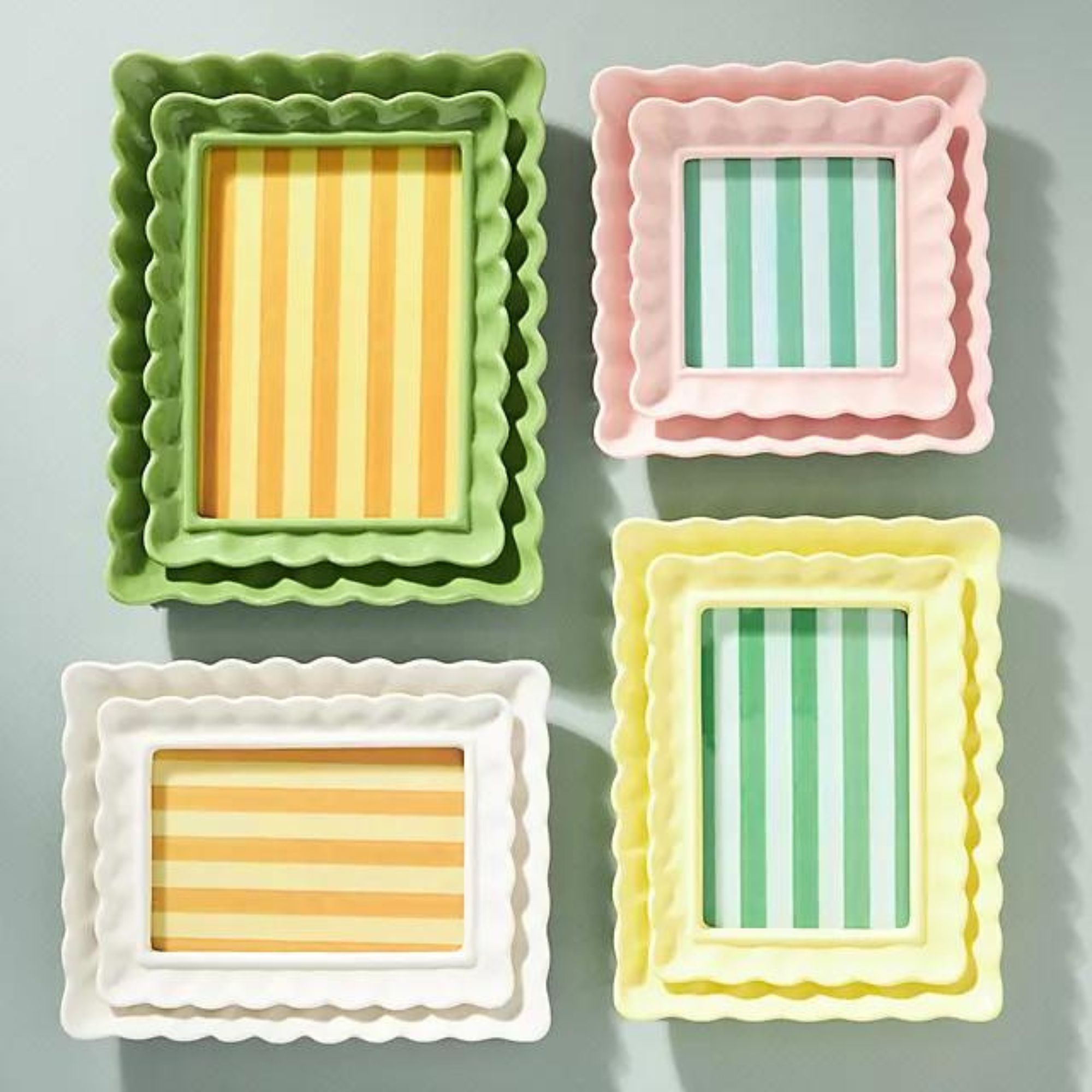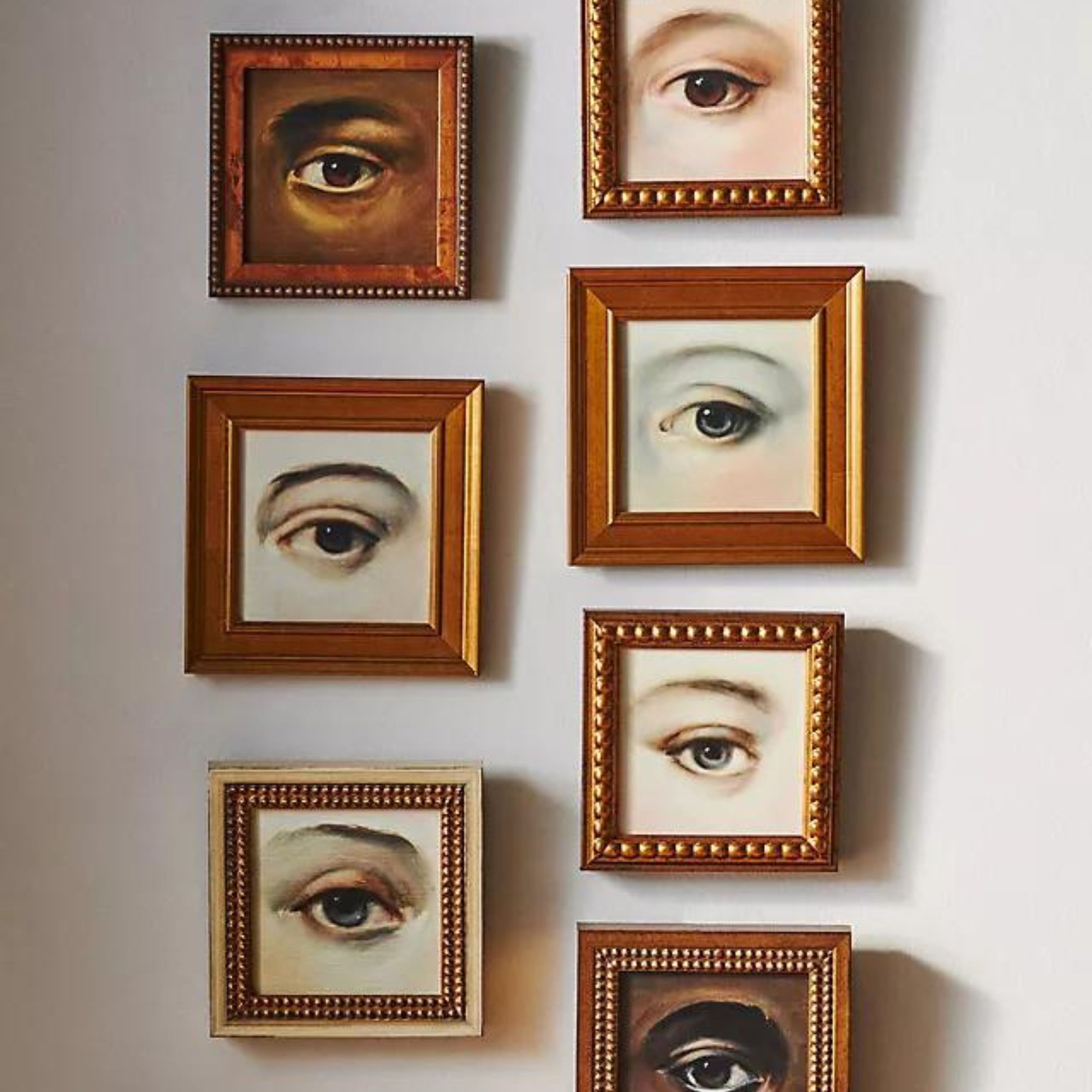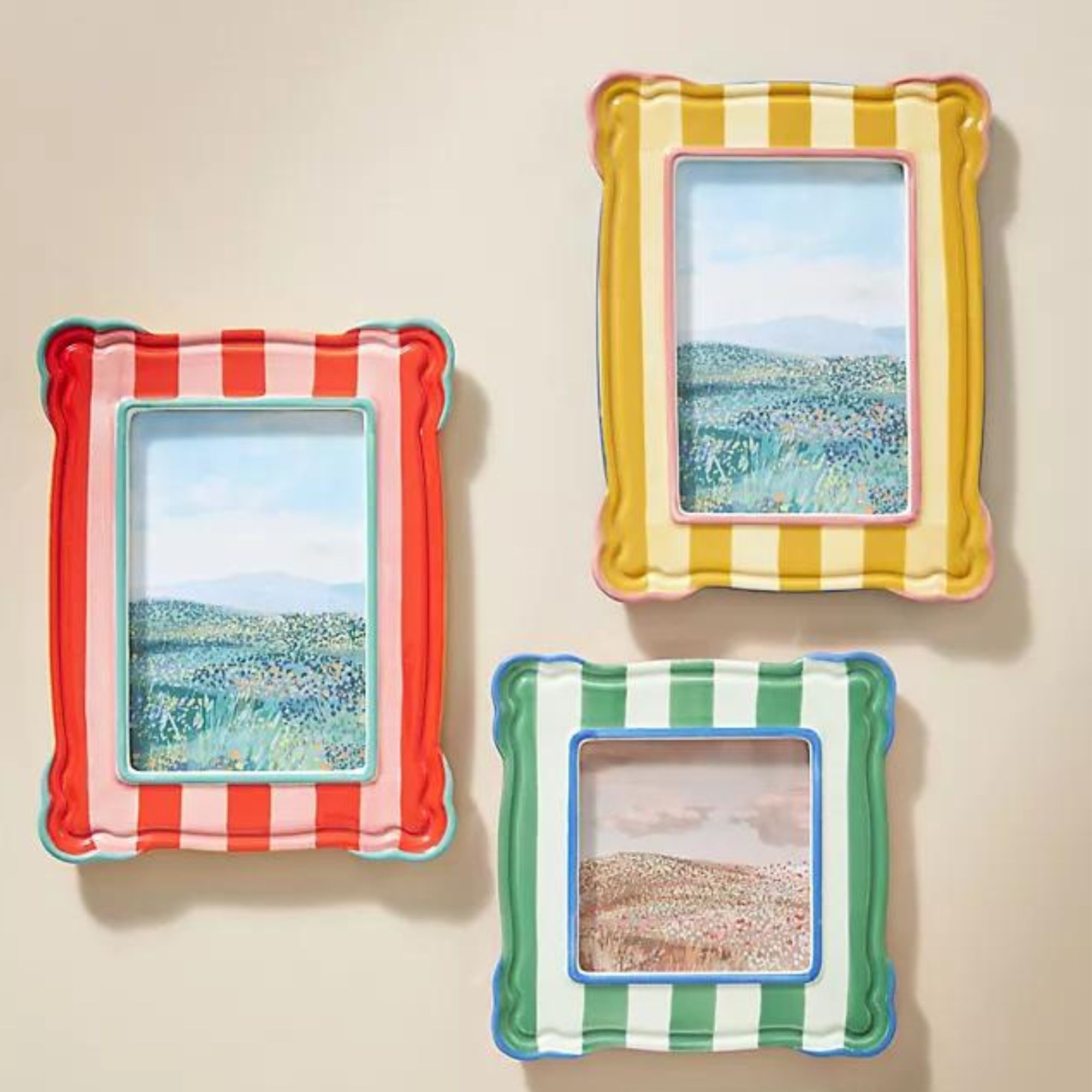What is maximalism? Interior designers who love the style talk us through the unique look
Maximalist spaces are coming back in a big way for 2024, but designers say the look is truly timeless – here's what to know
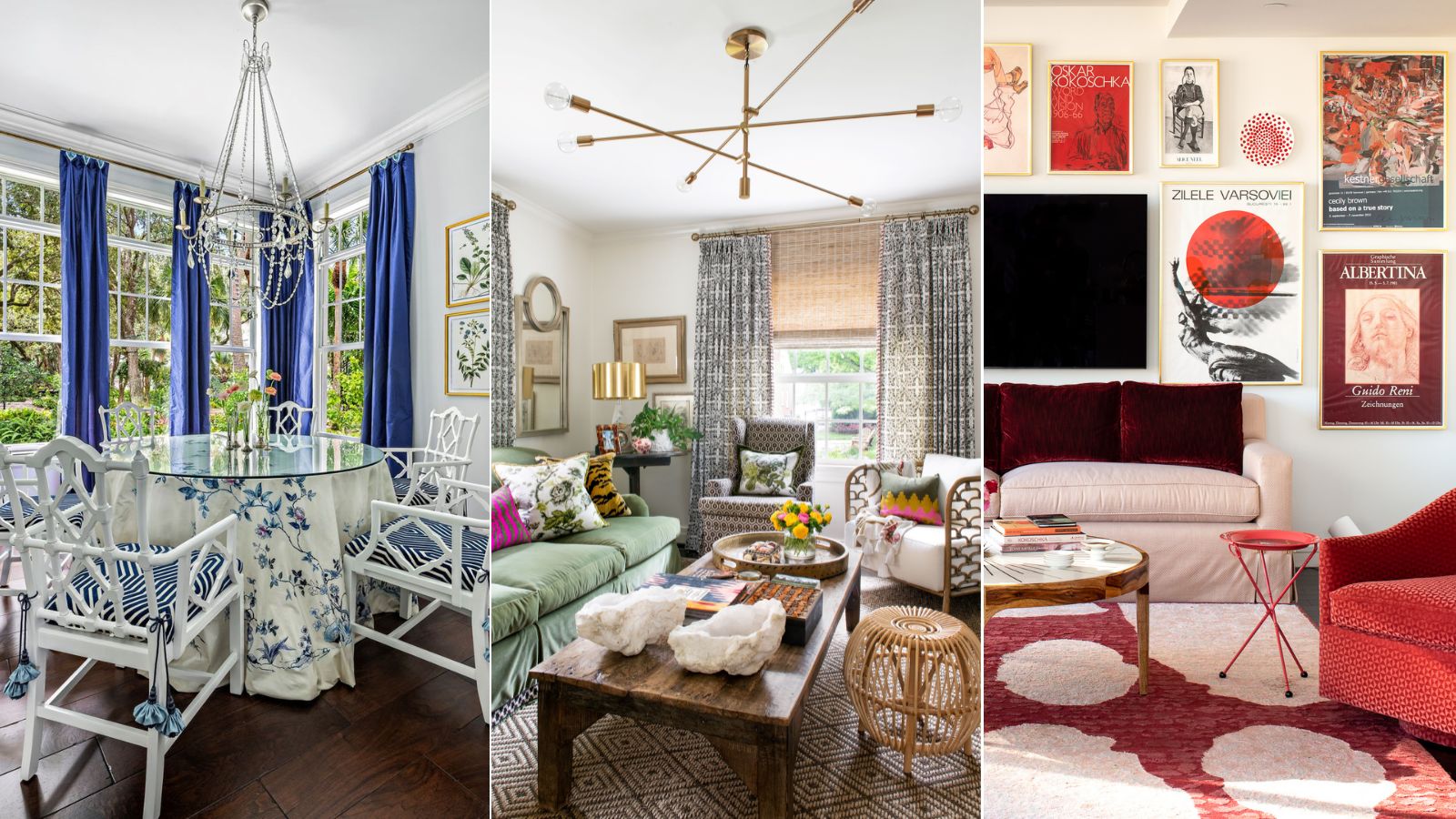

A classic interior design style, maximalism is gaining traction once again in 2024. Homeowners and designers alike are slowly but surely ditching their pared-back, neutral spaces in favor of the daring design look, attracted to its bold, characterful design principles and the opportunity to let their personalities shine.
But what is maximalism, really? The term itself is fairly well known, but there's a bit more gray area when it comes to the design style's key principles and features. Though even with some ambiguity, it's hard to deny that maximalist homes are intimate and personal
That's why we spoke with interior designers about what the interior design style means to them, how they put its principles to use, and why they love to decorate with maximalism in mind. This is what they had to say about the timeless look.
What is maximalism?
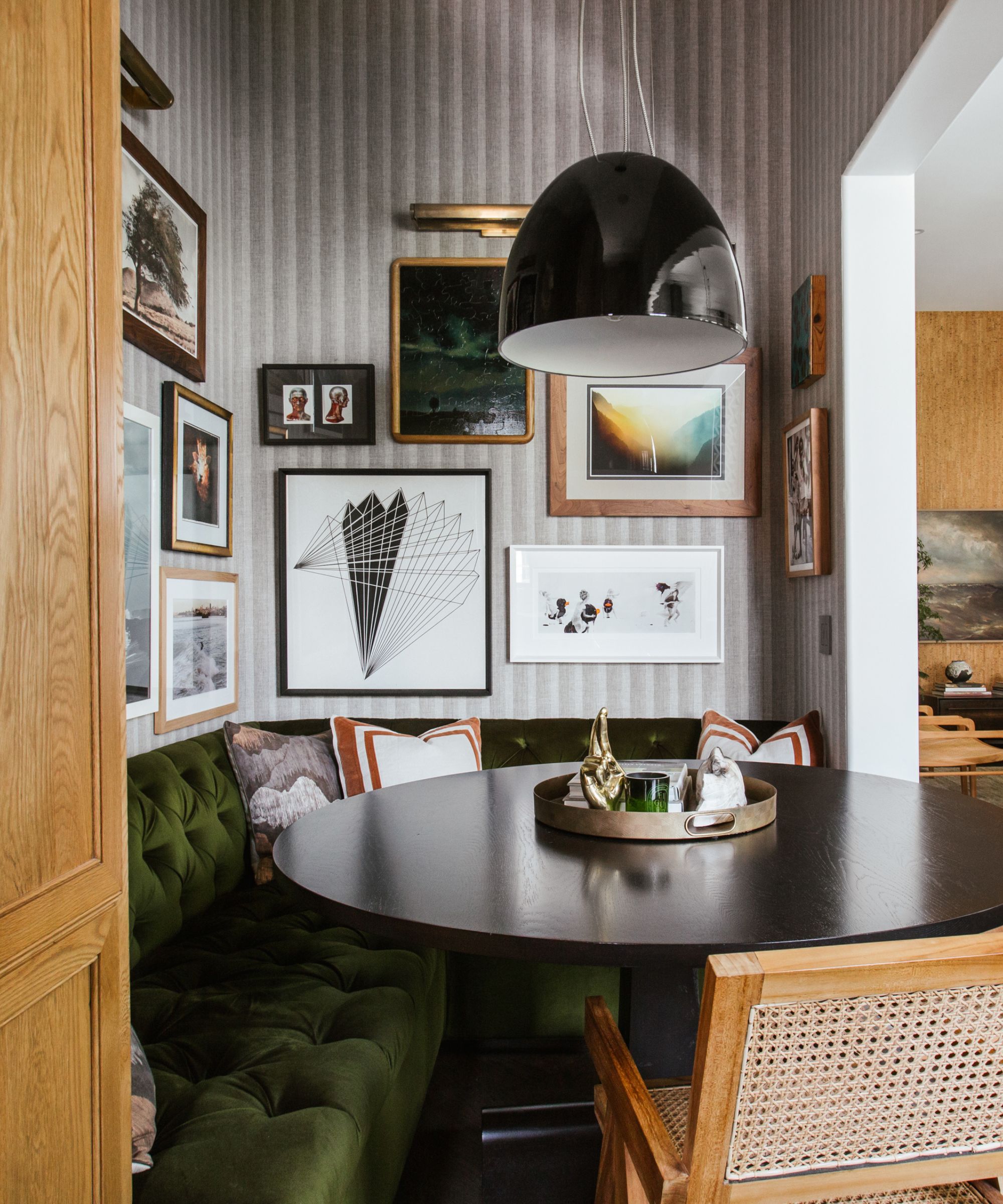
Each designer we spoke with offered a unique definition of maximalism, a testament to the design style's dependence on personalization. The ideal maximalist space looks unique to everyone, so the only way to truly get the style down is to be true to what you love. Maximalist interior designer Danielle McKim says the style is all about the atmosphere.
'To me, maximalism is the commitment to creating a space for any and all items that bring you joy. It’s the fearlessness of knowing there are no rules other than if you like it, you buy it. Basically, maximalism is decorating based on vibes,' says Danielle.
Because each maximalist space is different, each designer takes a different approach to making the maximalist decor trend work. Ryan Austin Hagood, principal designer with r.a.d. Interiors, says that maximalism 'often refers to a loud or chaotic environment.' But when he's designing a maximalist space, Ryan takes a slightly different approach.
'I interpret maximalist interior design in a more controlled sense by pushing the boundaries. This can be done by using patterned wallpaper or overfilling a nook with curated artwork featuring different framing and mediums, juxtaposed with a pop of color in upholstery or a rug. A true maximalist space is mixed with modern and traditional elements. Lots of layered accessories and decor are a must! If you’ve heard of minimalist design, this is truly the opposite,' he says.
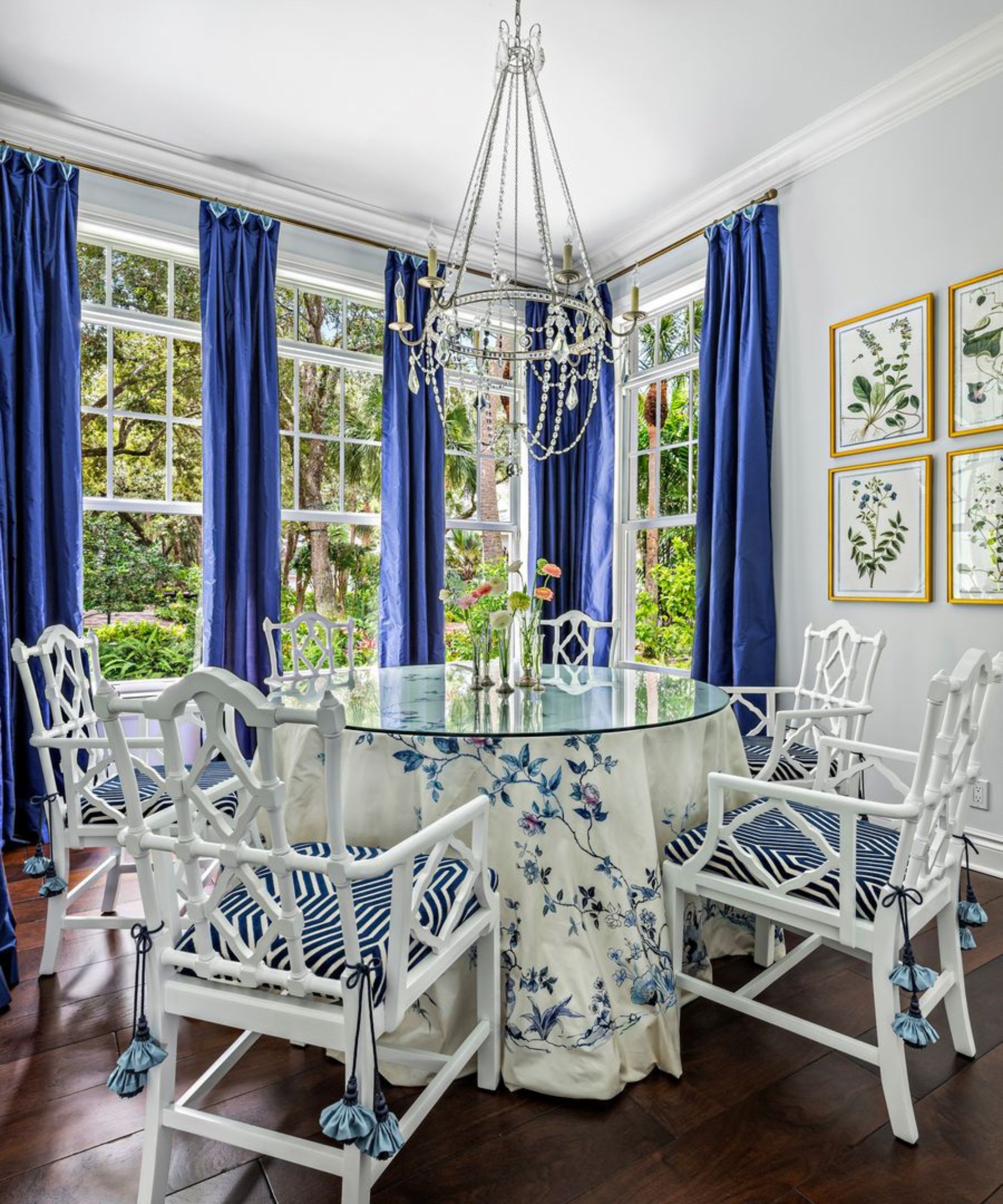
Isabel Ladd, founder and principal designer of Isabel Ladd Interiors, designs bold, colorful spaces and lives by the phrase 'more is more, less is a bore.' Although she agrees that there are 'varying degrees and definitions of maximalism,' she channels the words 'vivid and saturated' in her work. This version of maximalism is 'innate to who she is,' she tells H&G.
'My spin on it is a very intentional, methodical curated point of view. I’m not just throwing things together to see what sticks (which is perhaps a more ubiquitous definition of maximalism). Though I do layer a lot of color and pattern at once, I innately know when to keep going, and when to restrain. It's my affinity for unexpected combinations of colors, patterns and materials that bring uniqueness to my design,' says Isabel.
Though she also believes in the 'more is more' approach, Shani Risinger Core – founder and principal designer of Shani Core Interiors – agrees that a 'heavy dose of editing' is involved in getting a successful maximalist space just right.
'I never want my spaces to look like I included everything but the kitchen sink! My version of maximalism is a tasteful, edited combination of color, pattern, art, texture and different styles where the owner’s collections are elevated to center stage. Even books can become works of art when styled and properly arranged!' says Shani.
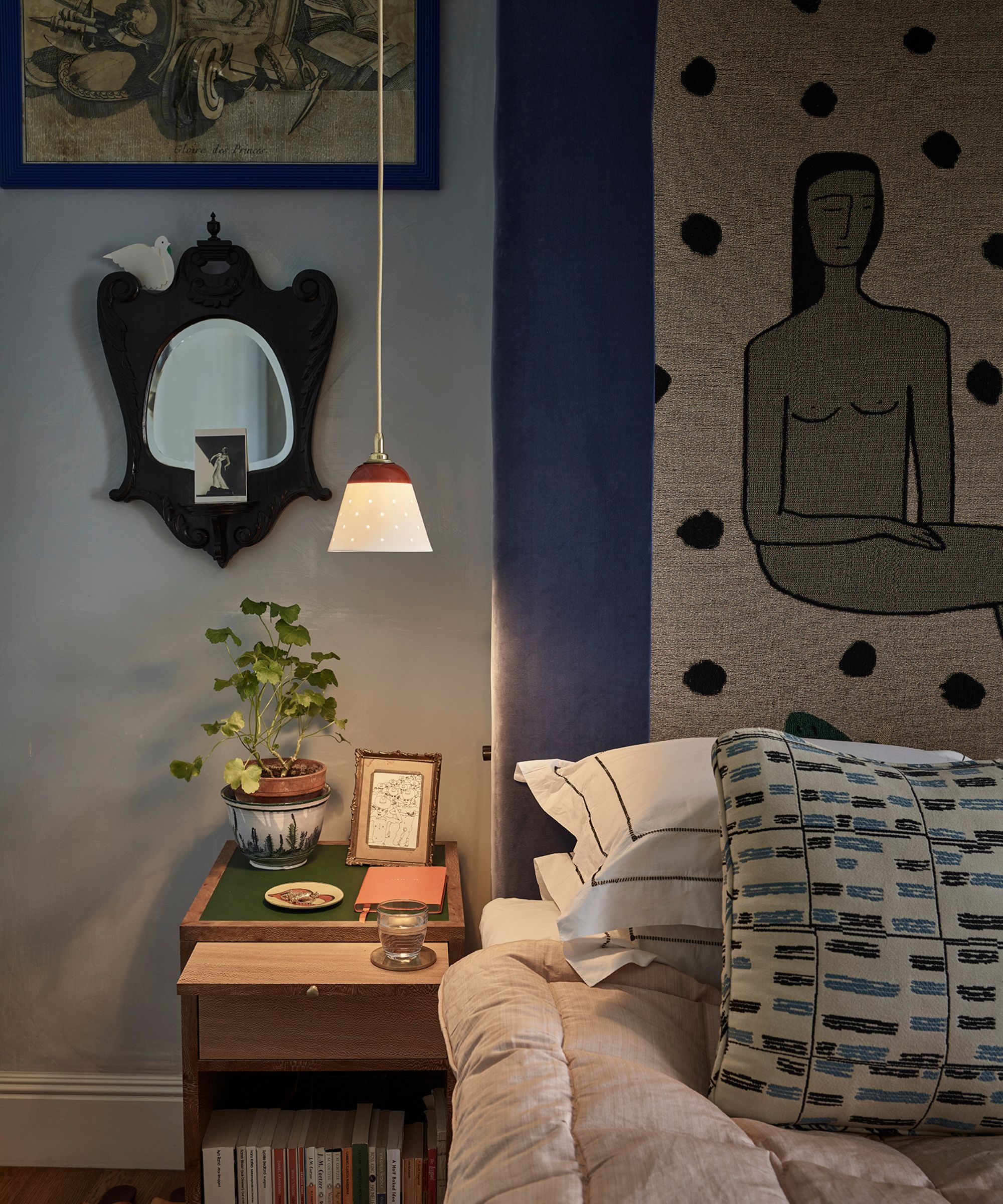
James Yarosh is the designer and gallerist behind James Yarosh Associates, a fine art gallery offering 'interior design services for the art collector.' Aptly, he considers himself a 'curated maximalist,' drawing upon his experience collecting and curating art, and designing interior spaces.
'I don’t view maximalism as excess, but rather I embrace maximalism as a means of celebrating the beauty that I see in the world and showcasing a life well-lived for myself and my clients. That said, without a strategic eye, the style can become chaotic and overstimulating. Every piece of art, decor, or furniture needs to move the design forward in a meaningful way. Maximalism to me is all about quality and selected restraint,' says James.
Ultimately, maximalism is personal, and tailored to each and every client. And, according to Rudy Saunders – design director of Dorothy Draper & Co. – it's all about 'being surrounded by an abundance of the things you love.'
'Maximalism is happy and joyful and it is a highly creative and personal approach to design. When executed well, it feels fantastic to the person who lives in the maximalist interior. Maximalism is fluid, it can be expressed through color, eclecticism, and collected items over a lifetime,' says Rudy.
How do designers put the style to use?
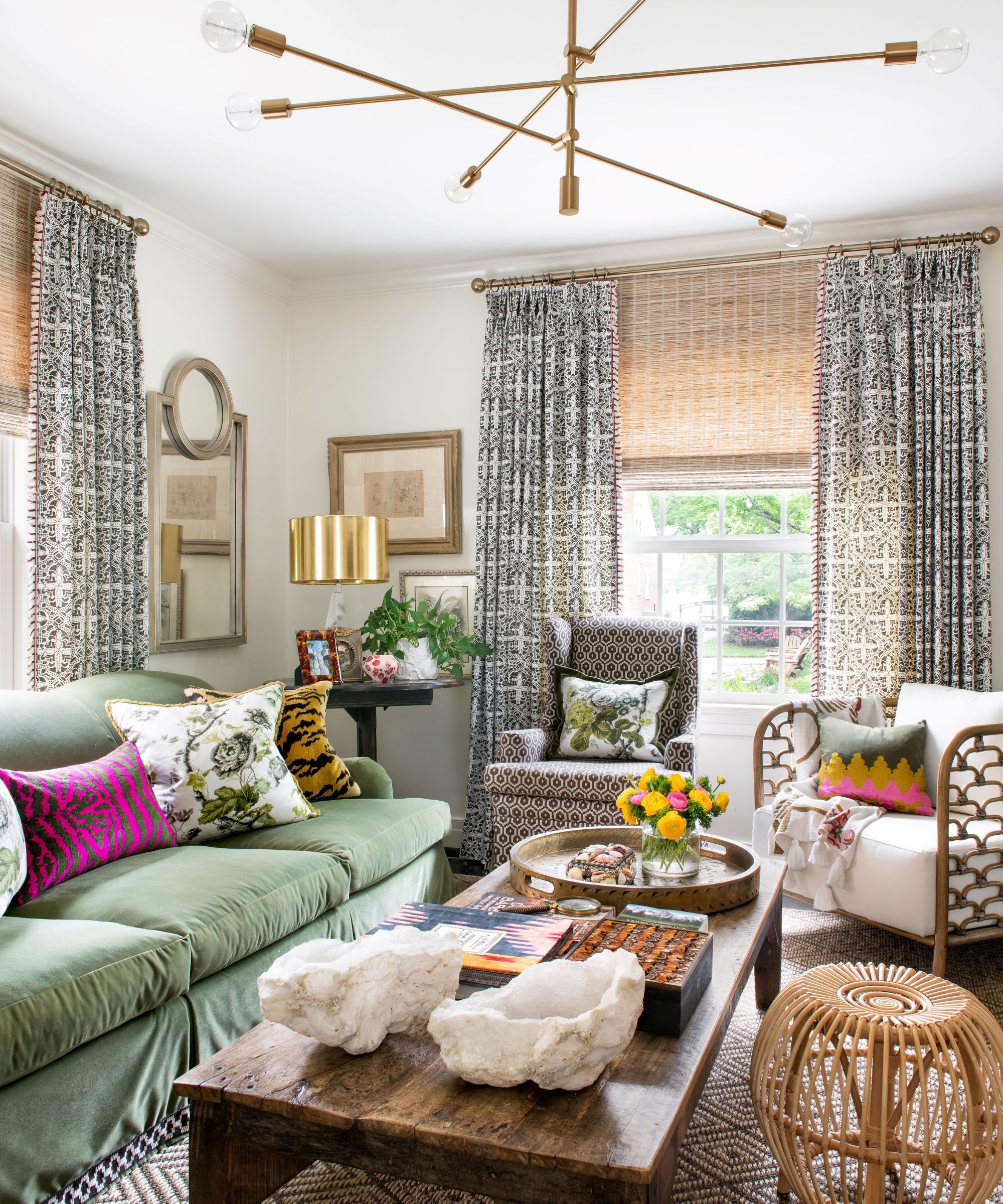
Understanding the rules for decorating with maximalism is one thing, but putting them to use in your own home is a new challenge to confront. But there's no need to be intimidated by the design style's bold, brave characteristics. Isabel says she asks a few key questions before embarking on maximalist-inspired projects to ensure the final product is just right for her clients. Then, she hits the books.
'I truly take into consideration how the client wants to feel, what colors they love (or don't!), how the room needs to function, and what things are most important to them. I work best when I'm truly free to be creative, and I start by going through my library and archives, and the entire space takes shape from that prized fabric or wallpaper,' says Isabel.
Shani takes a similar approach, letting 'textiles, a color story and any client collections' take the lead. One of her favorite places to implement maximalism is an art installation or gallery wall – but her approach is a bit non-traditional. Instead of sticking with 'the typical framed painting, photograph or print,' she tends to use 'anything but' to create personality-driven works of art.
'From vintage plates and platters, porcelain figurines atop wall brackets, mirrors of all shapes and sizes, custom acrylic shadow boxes holding silk scarves, baby clothing or even football helmets … my passion in creating maximalist spaces lies in highlighting a client’s special objects while layering them to form a room’s identity,' says Shani.
Shani is a firm believer that 'everyone collects something,' and she loves to show off these special items, no matter how small or simple. Decorating with antiques is also a must-do for maximalist spaces, she says. She prescribes 'at least one antique per room' to 'bring in an additional layer to every room's story with history.'
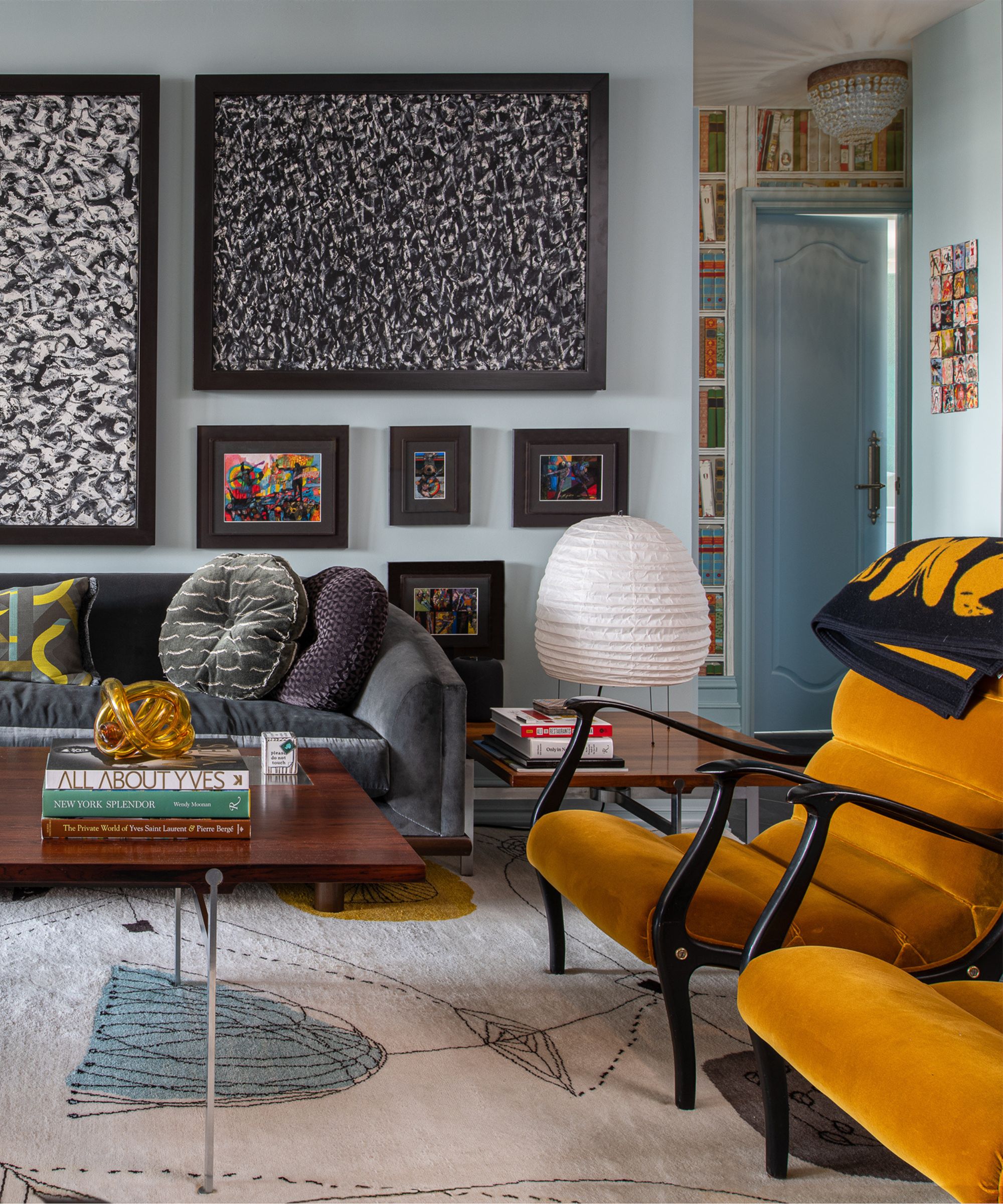
Because maximalism isn't the most approachable design style, and can be intimidating at first glance, Gideon Mendelson – founder and creative director of New York-based Mendelson Group, Inc. – suggests starting small. He encourages clients who are a bit more tentative about maximalist spaces to 'take more risks in spaces they're not spending as much time in or just "passing through." Though maximalist living room ideas are stunning, some find them to be a bit too much.
'Bedrooms and living rooms can be calmer if they prefer it, but let’s have some fun elsewhere. You’re typically just there in a powder room for a short visit, so we like to bring some whimsicality to those moments. A dining room is a place for family and friends to come together, so why not design a room that inspires sharing, lively conversation, and debate?' says Gideon.
Avalana Simpson, creative director at Avalana Design, suggests a similar approach. By starting with a bathroom or study, you can be a bit more 'playful without fully committing to the rest of the home.'
'My tip is to layer up. Wall color, wallcoverings and flooring comes first and feel free here to create something different, whether that be opting for dark floors, color drenching the whole room (even the doors), or maximizing the fifth wall: the ceiling,' says Avalana.
From there, she says you can tackle texture and pattern to add visual interest and contrast. 'Meaningful items that help tell your story' will round the design style out. She says these finishing touches 'needn't be expensive' – as long as they hold a special place in your heart, they're welcome in maximalism.
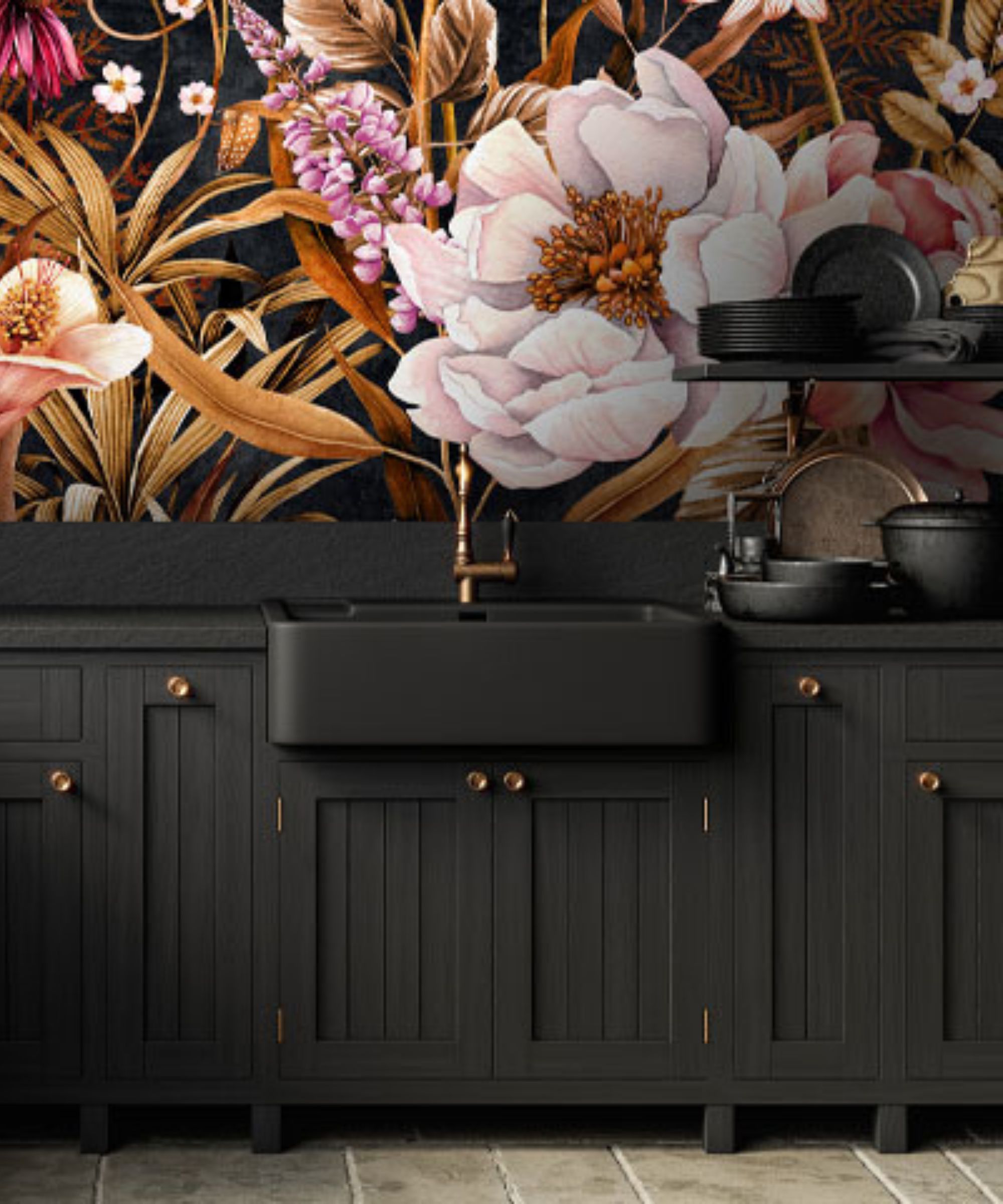
Rudy agrees that layering is key when it comes to maximalism, and he encourages a thoughtful blend of 'styles and periods, colors, patterns, and textures.' When taking on a maximalist project, an easy place to start is focusing on a centerpiece or focal point first, he says.
'If you have an heirloom mirror or a piece of artwork you found on a trip, make that the focal point of the space that everything else jumps off from. Think of maximalism as storytelling, the storytelling of the life of the person or people that live in a home. It is imperative that every piece of furniture, accessory, and art in a space move the design forward,' he says.
Maximalism often works best when you apply the furniture, artwork and accessories you already own to the style, especially when you've accumulated sentimental treasures over the years, like Danielle. She says she begins by 'pulling all the items [she] wants in that specific space and creating [her] puzzle.'
'I like to work with large collections by displaying them in a uniform way but allowing each item to have its spotlight. I enjoy seeing how people react to my quirky home; there is something everywhere; how can you not love that?' she says.
When in doubt, Ryan says he looks to 'the greats,' mentioning designers Kelly Wearstler and Ken Fulk as sources of maximalist inspiration. A thoughtful blend of professional influence and personal touch goes such a long way in maximalist spaces.
How to find a balance between maximalist principles and other design styles
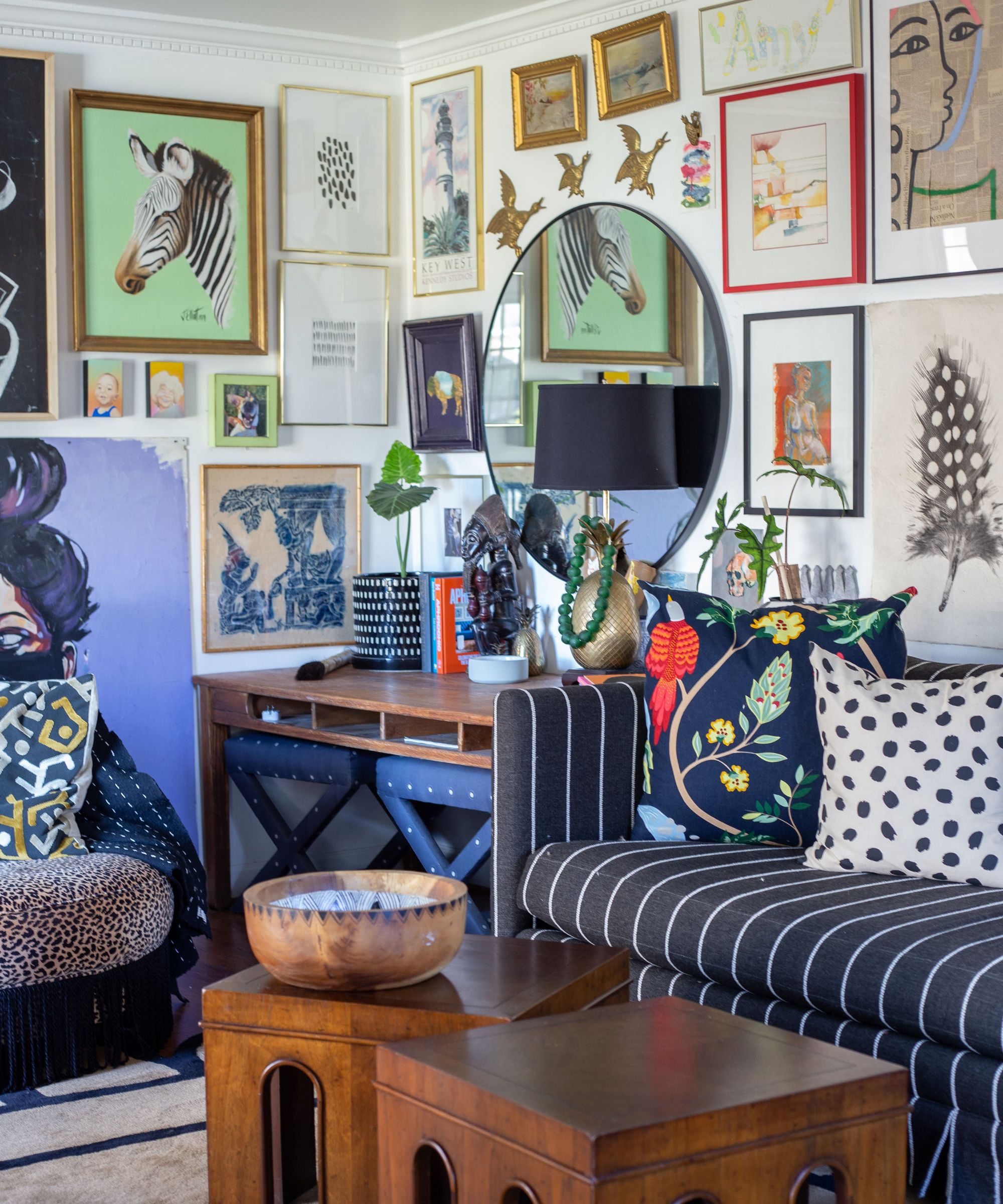
Because maximalism is bold and loud, it's easy to go overboard. So, when designing maximalist spaces, designers are tasked with toeing the line between too little and too much. Ryan takes a layering approach, slowly introducing small touches like 'dramatic lighting, quirky details in trim and unique hardware' before bringing in 'impactful pattern or color.'
'The designer must have the creative ability to balance the materials and avoid too much clutter. The balance of tones and textures is paramount to getting it right!' he says.
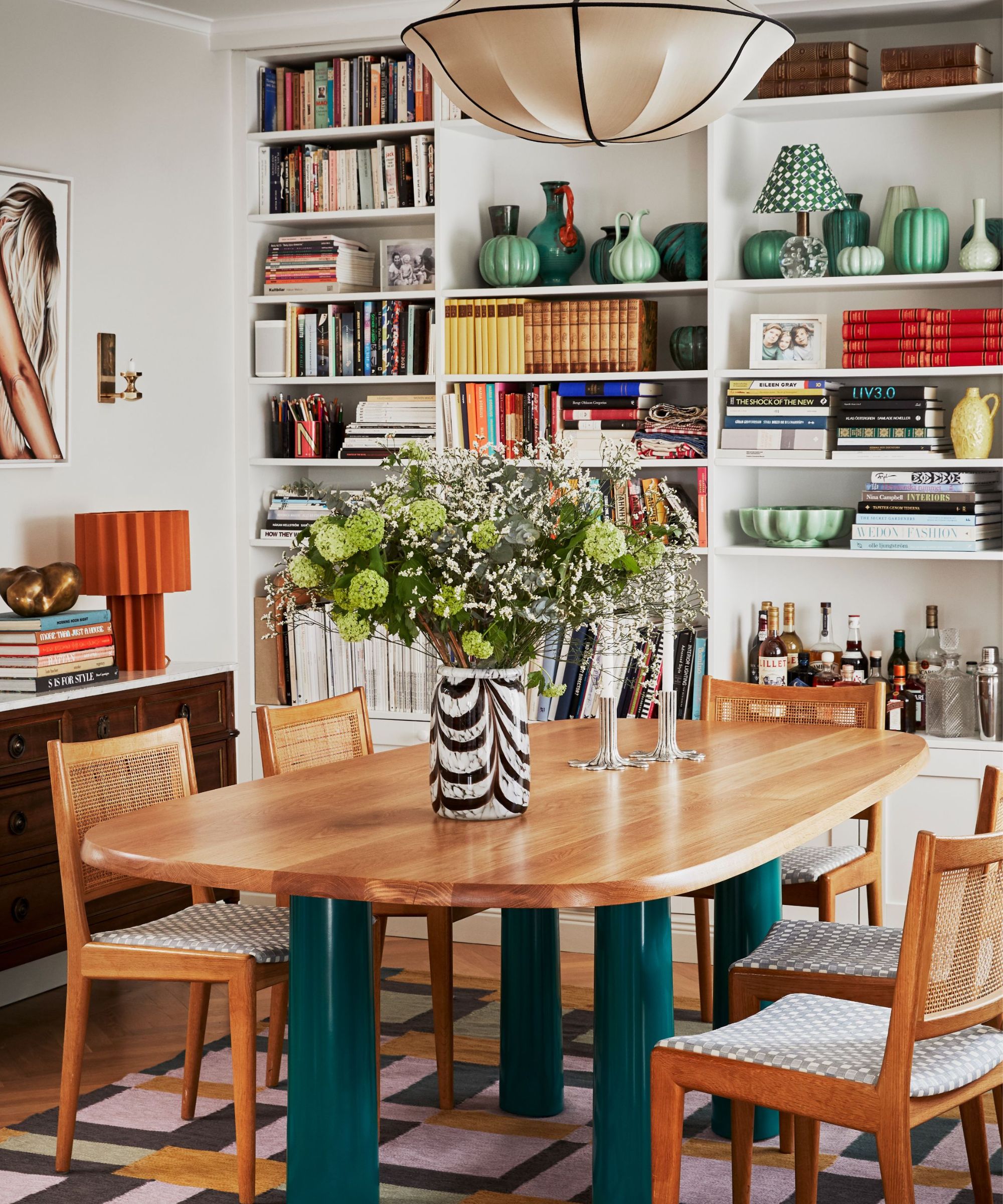
Just because you're channeling maximalist principles in your interior design doesn't mean you have to go all out with bright colors, jarring patterns, and lush textures. There's always room to adjust the level, and only introduce the design elements you love. As James says, 'You can explore maximalism with a minimalist approach.'
'You can definitely dip your toe in different levels of maximalism. One way is to take a monochromatic approach and curate items by color. Another option is to select just a couple of objects or star fabrics that will really shine in the space. Marrying patterns and creating a conversation within the room is also a successful application of the concept,' says James.
Why do designers love maximalism?
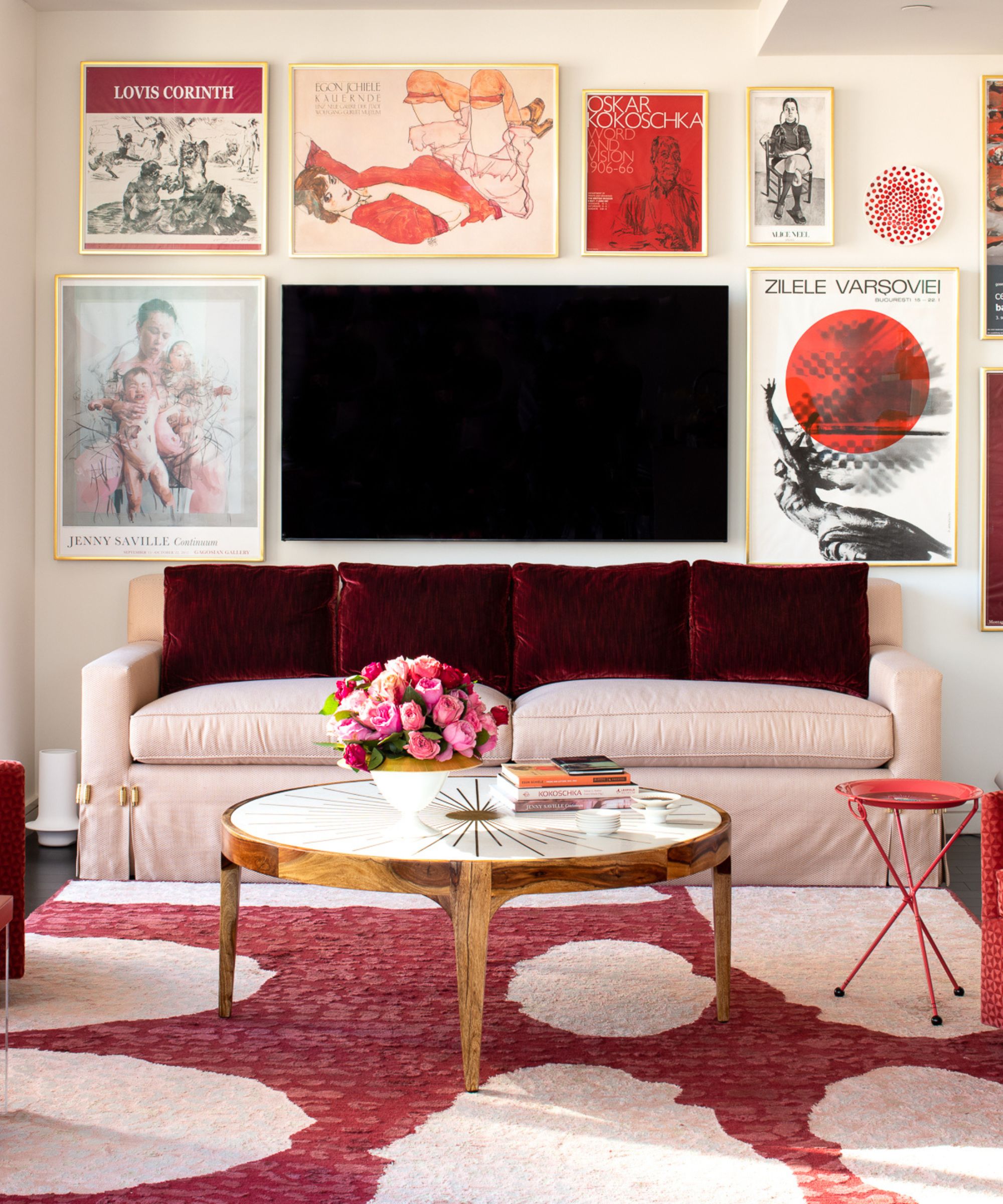
'My favorite aspect of maximalist design is how personal the rooms can be. The intention is that maximalist rooms are wildly reflective of the people who live there; a collection of their favorite things and an expression of their favorite colors and patterns,' says Isabel.
One of interior design's driving purposes is self-expression, and maximalism is a perfect way to show off your personality, past and character. Plus, designers say these spaces are loads of fun to design – and live in! As the era of all-beige interiors fades away, more and more people are turning to maximalism for what Ryan calls its 'whimsical world of humor and fun.'
'Minimalist spaces can feel sterile, unfinished and cold, so I always push any opportunities for a client to maximize their space as much as the space allows, as long as there is balance,' he says.
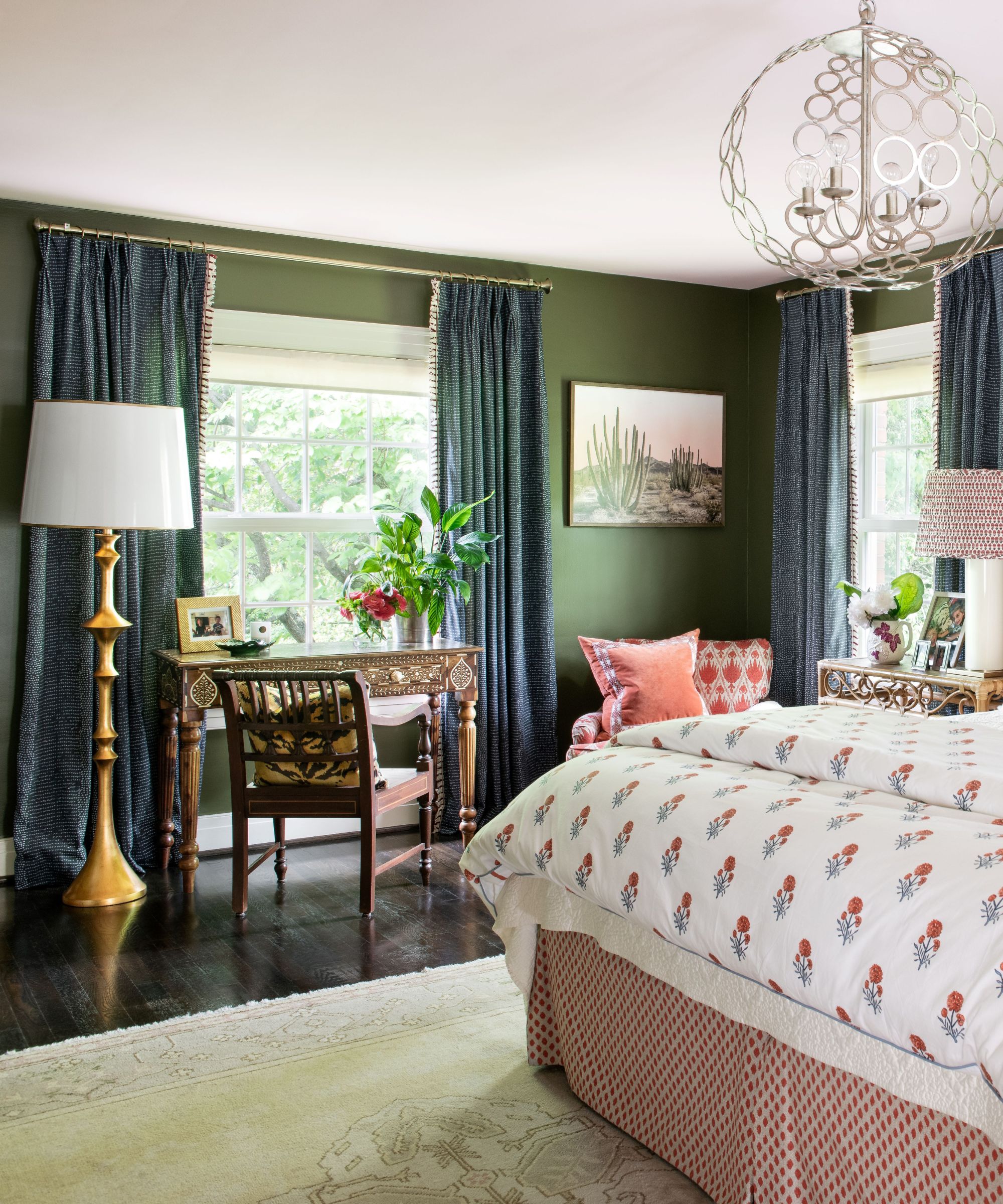
Like all good interior design, maximalism tells a charming story, imparting facts about the people who inhabit the space without losing aesthetic appeal. Plus, James says the style offers an easy route to self-exploration and development of interior design taste.
'There is a creative freedom with maximalism that allows you to develop your own vocabulary and style. It’s also a style that teaches you to master the art of curation. Every piece you have in your maximalist interior is special to you, a piece that has an incredible memory tied to it and is layered amongst other pieces that you fell in love with or has wonderful stories associated with them,' he says.
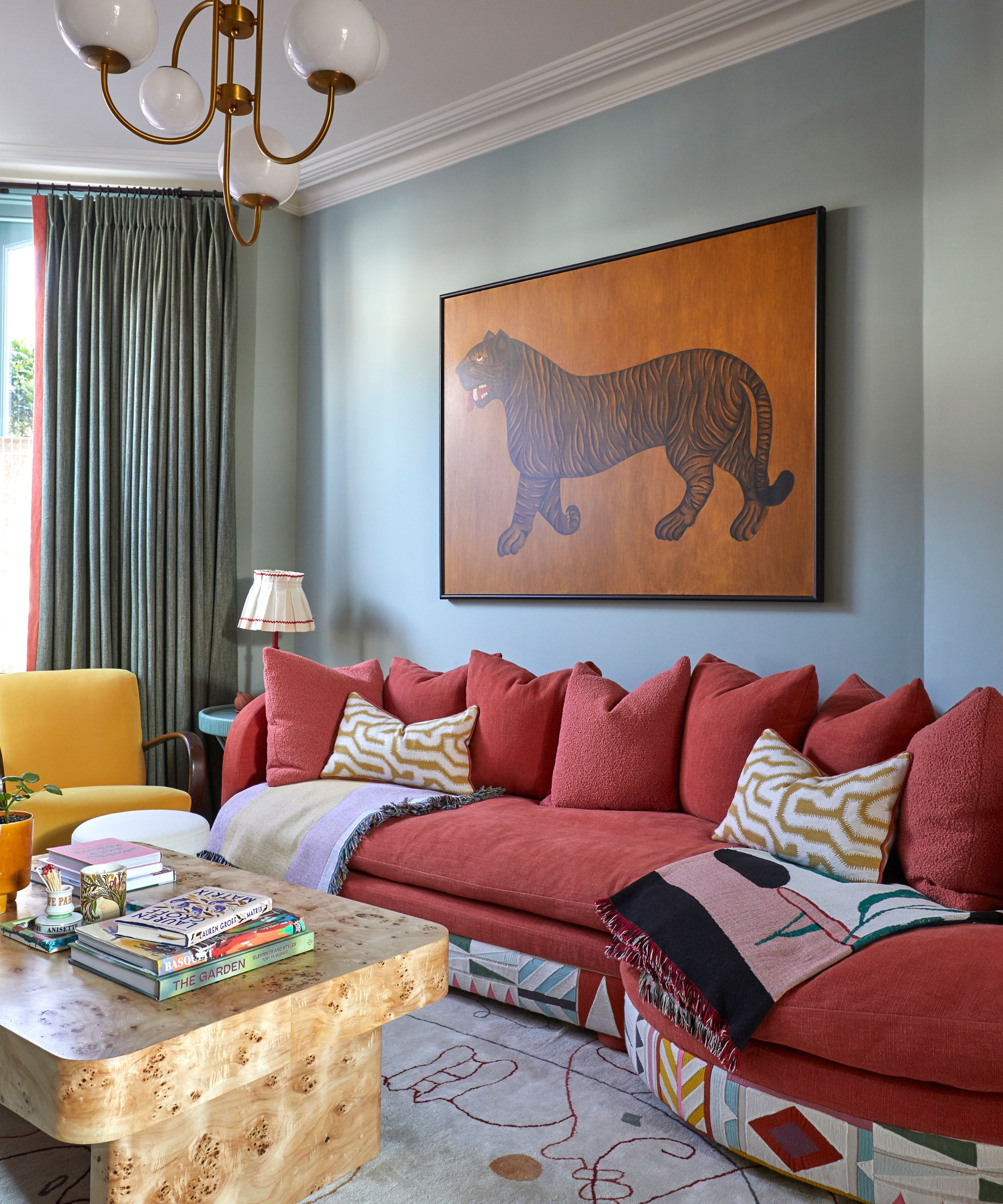
Shani grew up in Texas, and while her childhood home was not maximalist, her relatives were 'maximalists to the max'. 'Every square inch of the walls, from the crown molding to the baseboards, was covered in art, clocks, plates, bows, mirrors and everything in between,' she says. With this foundation, and with the help of a cousin who introduced her to 'fine antiques at a young age,' Shani grew to love the key tenets of maximalist style.
'When going into a maximalist space, you should always be able to find something new and interesting with a story. A maximalist room is an automatic conversation starter and tells the people who enter a little bit about the owner without having to say a word,' says Shani.
Is maximalism back?
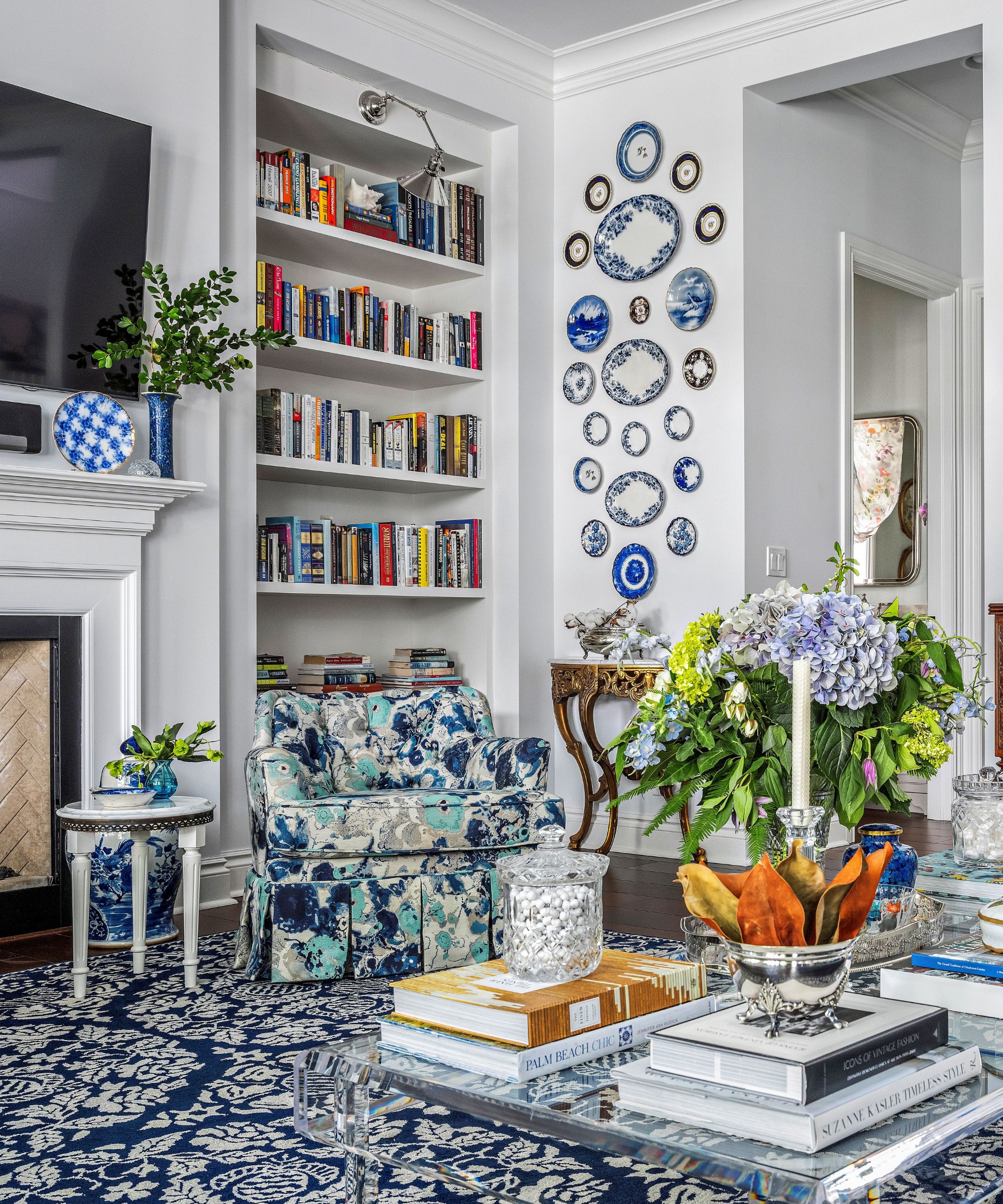
Designers love maximalism, and it's clear why – with plenty of opportunity for creative expression, storytelling and joy, it exemplifies what design is all about. But is maximalism more on trend than minimalism? And are maximalist interiors back for good? Designers say that minimalism will never fade entirely, but many agree that maximalism is coming back in a big way.
'Maximalism is winning over minimalism because of this deeply rooted, personal, and reflective approach to decorating. Frankly, maximalism is more interesting, curious, and dazzling than minimalism,' says Isabel.
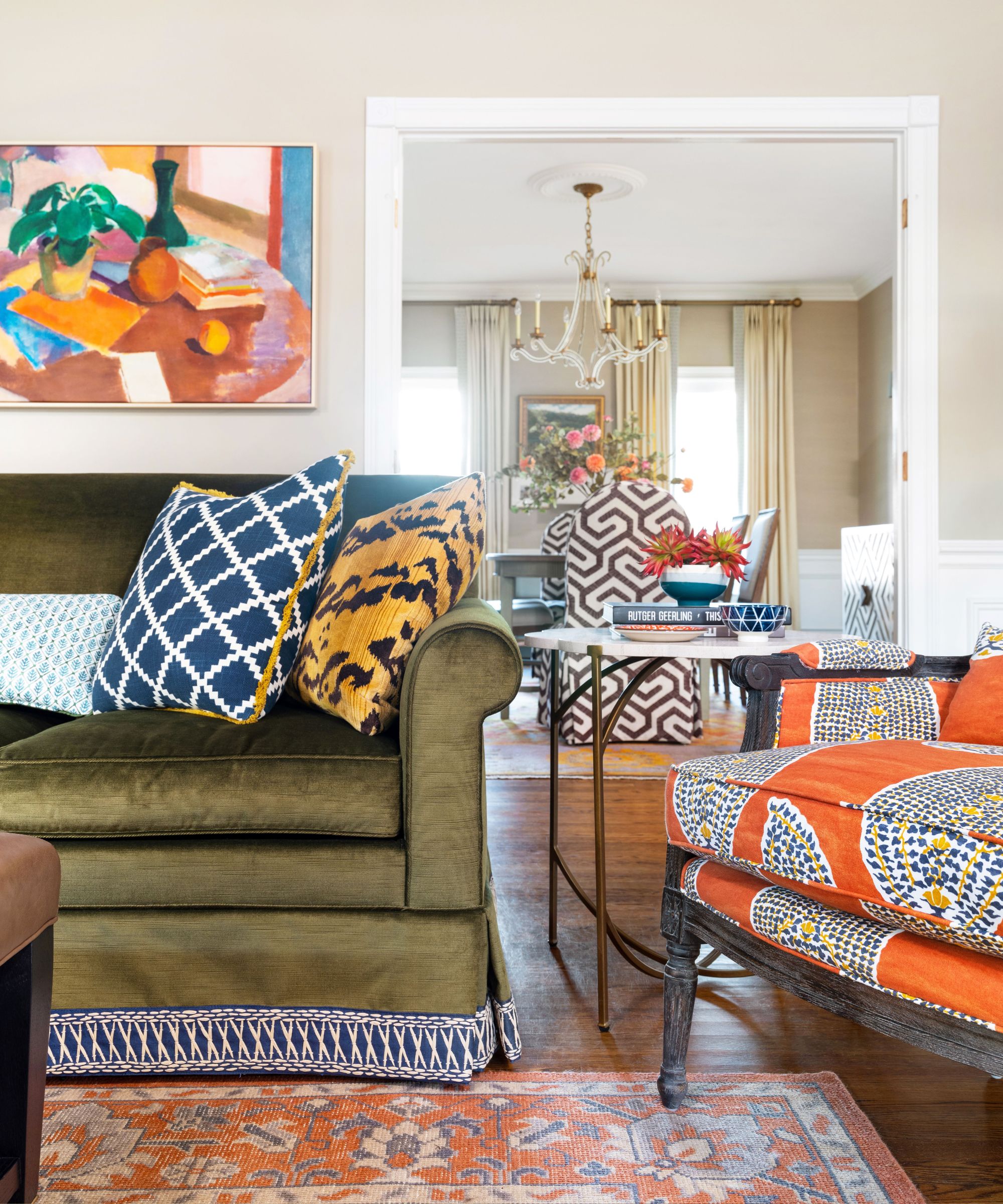
'Maximalists have been here and always will be! Decorating with the emphasis on displaying a few items can never and will never be worth the effort. In my opinion, that is. When I walk into my home, I’m enveloped in items that tell my life story, and it feels like home,' adds Danielle.
One of the main caveats designers have to add about maximalism is that it must be done tastefully to be truly successful. Gideon says it 'requires an experienced eye,' as 'too much in a space can feel chaotic if it's not done carefully.'
'There should be a balance of patterns and color so an understanding of scale and color theory is critical. When a client wants this look, we aim to create a scheme where things work well together but don’t compete. Trust your decorator!' he says.
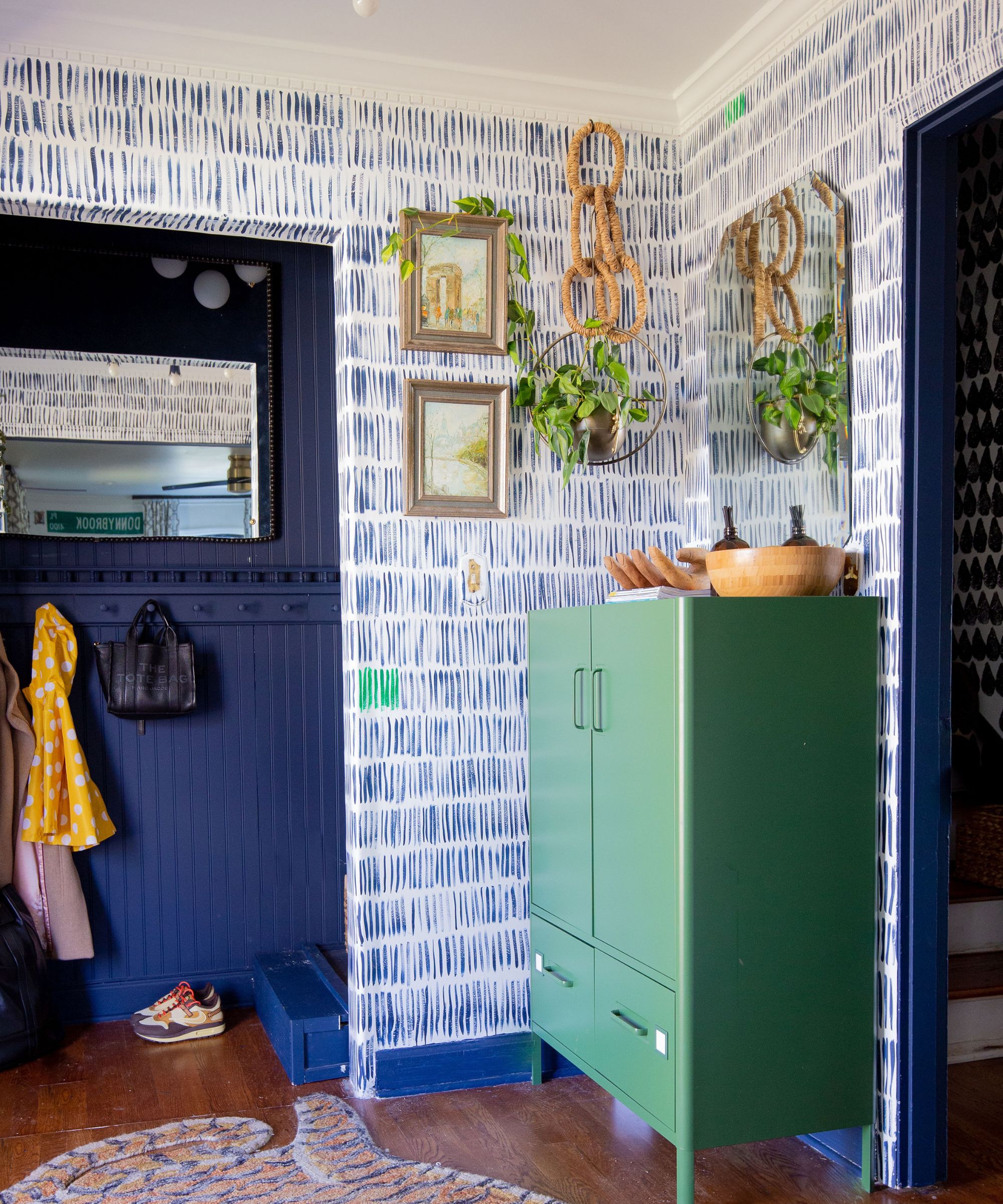
Avalana says she's pleased that maximalism is back in mainstream style, adding that she feels no remorse in doing away with 'minimal and clinical' design schemes. Calling maximalism an 'anti-minimalism movement,' she loves the contrast of layers and unexpected color combinations that maximalism brings to the design scene.
'2024 is all about adding cinematic scenes, rich patterns, bold color schemes and adding accessories to your home that have meaning. The result is a space with flair and personality. People, whoever they are and whatever experience they have are finding joy in being creative. Maximalism is transformative, the layering of a space is a journey and I feel like that is why it has real staying power,' she says.
Even if you're not sold on the all-out, bold maximalist interior design style, it's clear that its principles carry some truth. By sticking with what you love, expressing yourself through your interiors and having some fun with color and pattern, you'll be living in the maximalist spirit.
Sign up to the Homes & Gardens newsletter
Design expertise in your inbox – from inspiring decorating ideas and beautiful celebrity homes to practical gardening advice and shopping round-ups.

Abby was the Interior Design News Editor at Homes & Gardens and is now studying for her Master's degree in Journalism at City University, London. Prior to joining our team, she worked with Better Homes & Gardens, where she wrote and edited content about home decor, gardening tips, food news, and more. She studied Journalism and English Literature at New York University and moved to London to pursue her love of writing in 2023.
-
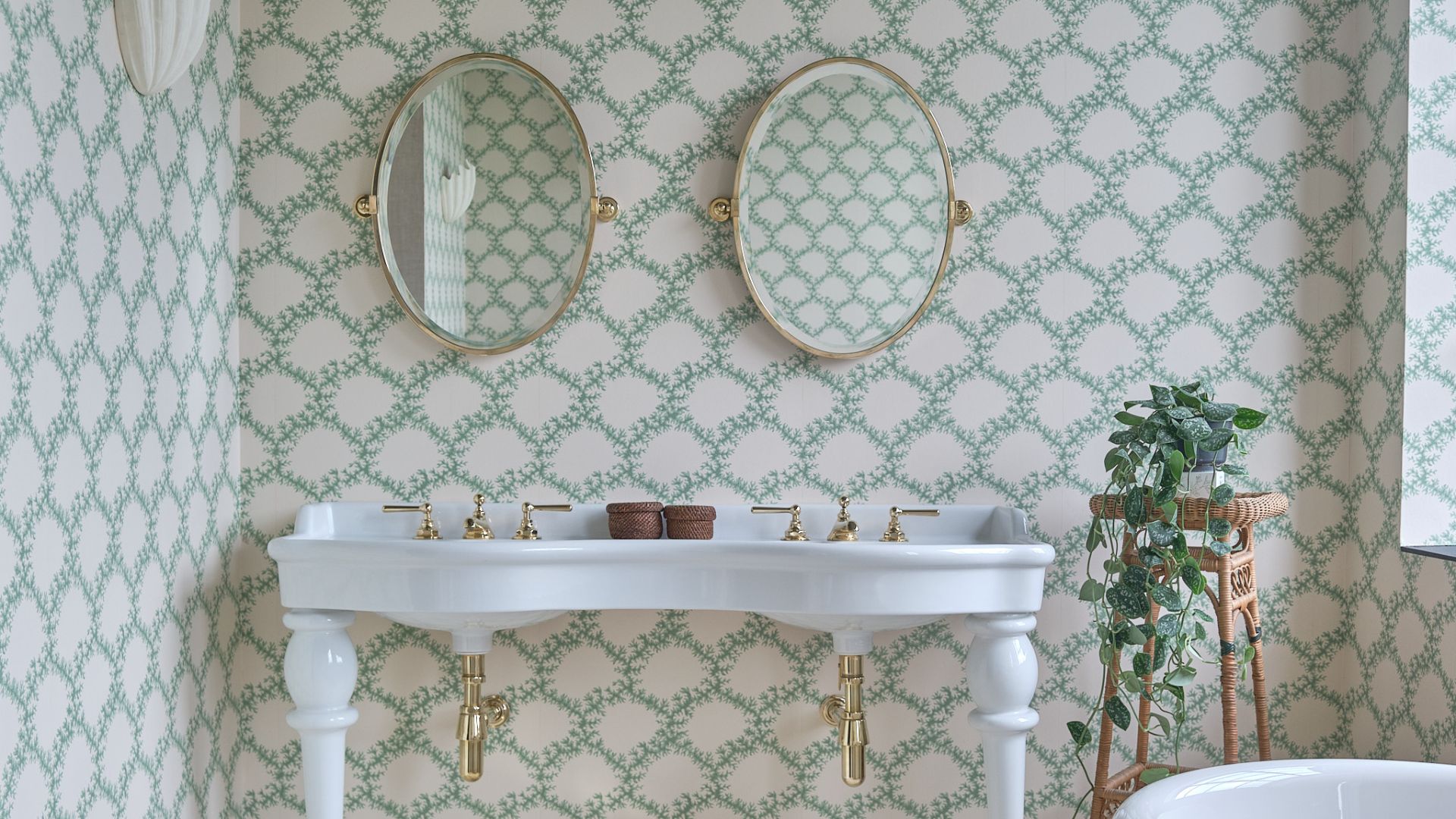 I tried this glycerin hack to stop the mirror in my bathroom from fogging up – and it worked like magic
I tried this glycerin hack to stop the mirror in my bathroom from fogging up – and it worked like magicIt instantly fixed one of my biggest pet peeves
By Chiana Dickson
-
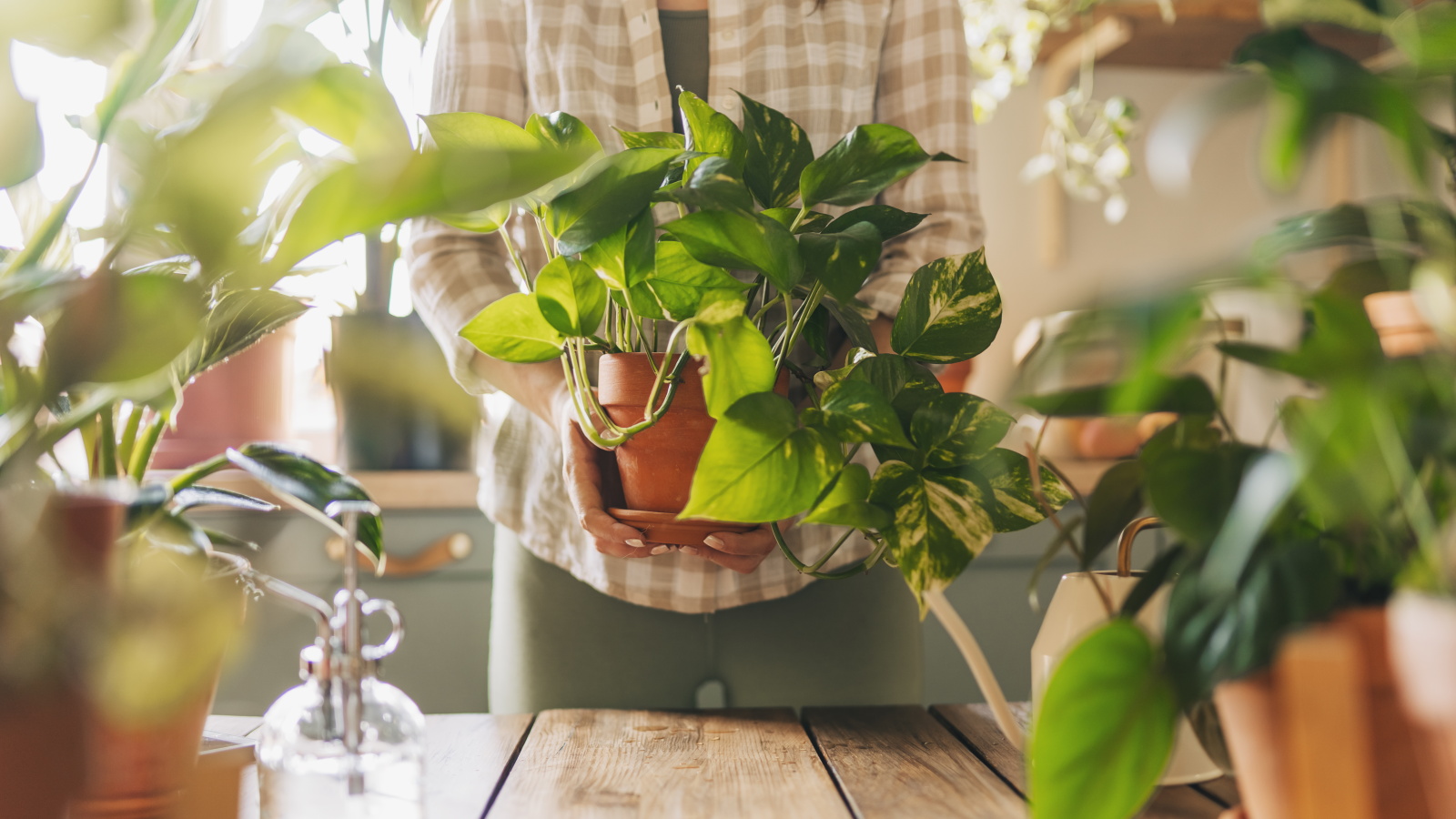 7 habits every good plant parent has, according to houseplant experts – number 3 will surprise you most
7 habits every good plant parent has, according to houseplant experts – number 3 will surprise you mostWatch your houseplants thrive after you build these tasks into your routine
By Tenielle Jordison
